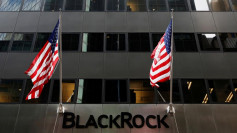Sources familiar with the matter claim that the Federal Deposit Insurance Corporation (FDIC) is seeking advisors to sell the securities portfolios of failed Silicon Valley Bank and Signature Bank, which their new owners declined to take on, according to Reuters. The portfolios consist of low-yielding assets, such as Treasuries and U.S. government agency-backed securities, which the two regional banks accumulated when interest rates were near zero.
If First Citizens Bancshares Inc, the new owner of Silicon Valley Bank, or New York Community Bancorp Inc, the acquirer of Signature Bank, had taken on the assets, they would have faced losses given the current higher interest rates compared to these assets' yields.
The securities portfolios of Silicon Valley Bank and Signature Bank hold face values of approximately $90 billion and $26 billion, respectively, based on regulatory filings and government official statements. Those who spoke about the confidential sale process did so on the condition of anonymity, and the FDIC declined to comment on the matter.
The potential loss to the FDIC's deposit fund from the sale of these portfolios remains uncertain. The fund, which guarantees deposits at failed banks, is replenished by a levy imposed on all U.S. banks participating in the FDIC's deposit insurance scheme.
The FDIC estimates that the sale of Silicon Valley Bank and Signature Bank will cost the deposit fund $20 billion and $2.5 billion, respectively. Final figures will be released once the banks' loan books and securities portfolios have been sold.
First Citizens and New York Community inherited some of the loans with FDIC backstops, while others are being sold separately. The FDIC has reportedly engaged Newmark Group Inc to sell approximately $60 billion of Signature Bank's retained loans, as Reuters reported earlier this week.
Silicon Valley Bank revealed the potential losses in its securities portfolio on March 8, just two days before its failure, when it sold $21.5 billion of the portfolio to meet customer withdrawals, incurring a $1.8 billion loss. The portfolio had an average yield of 1.79%, significantly lower than the 10-year Treasury yield at that time, which stood at around 3.9%.





